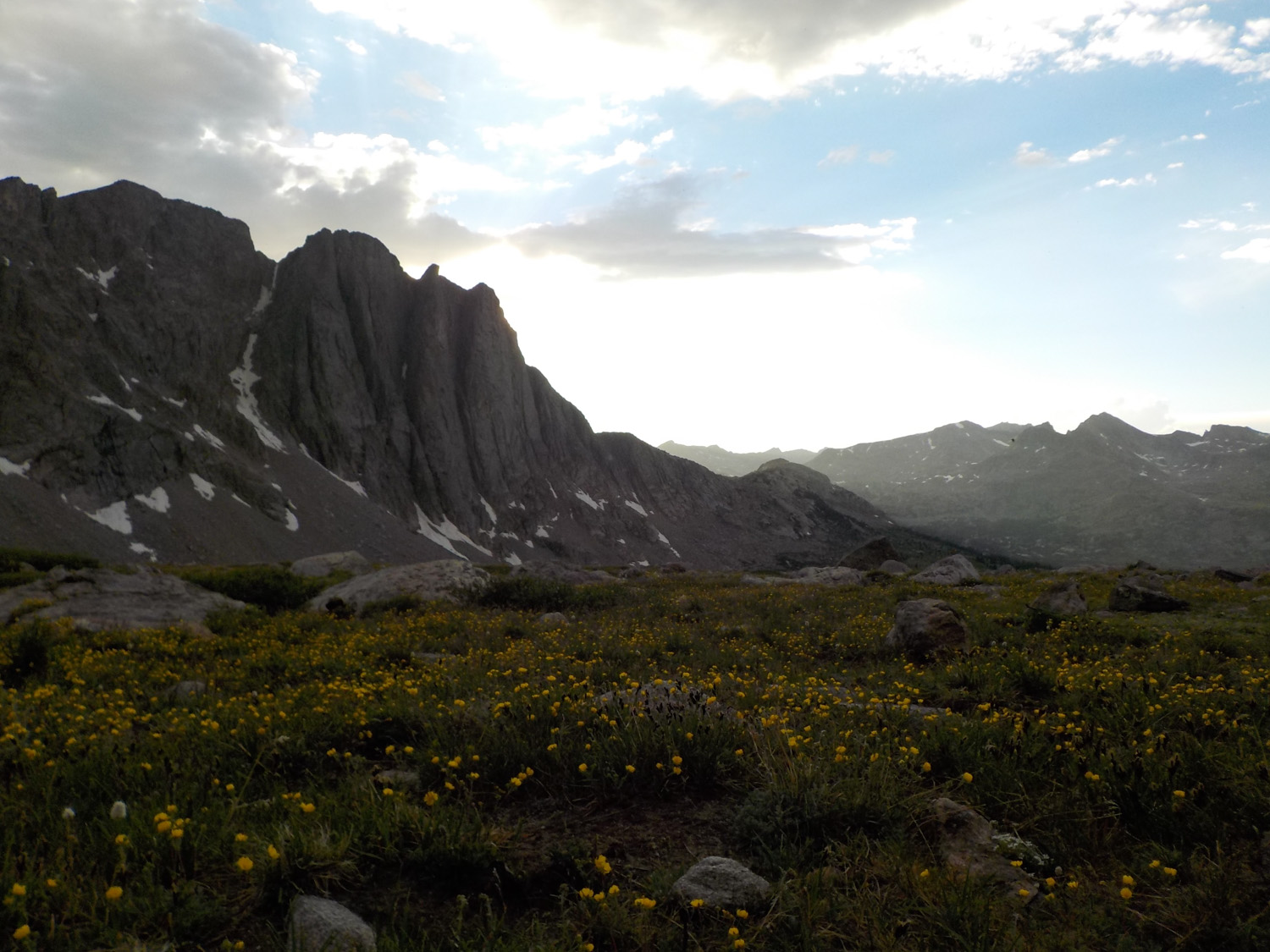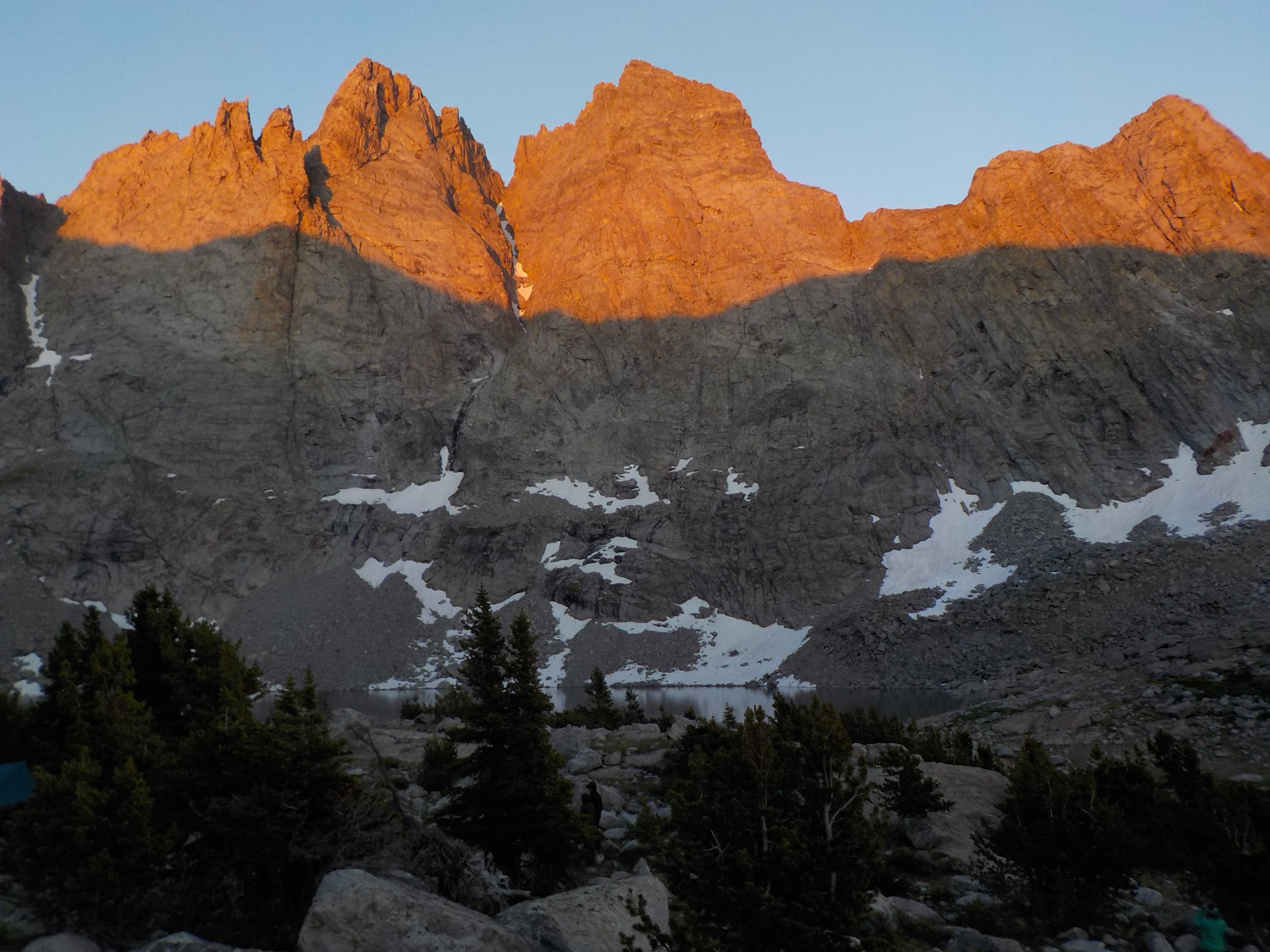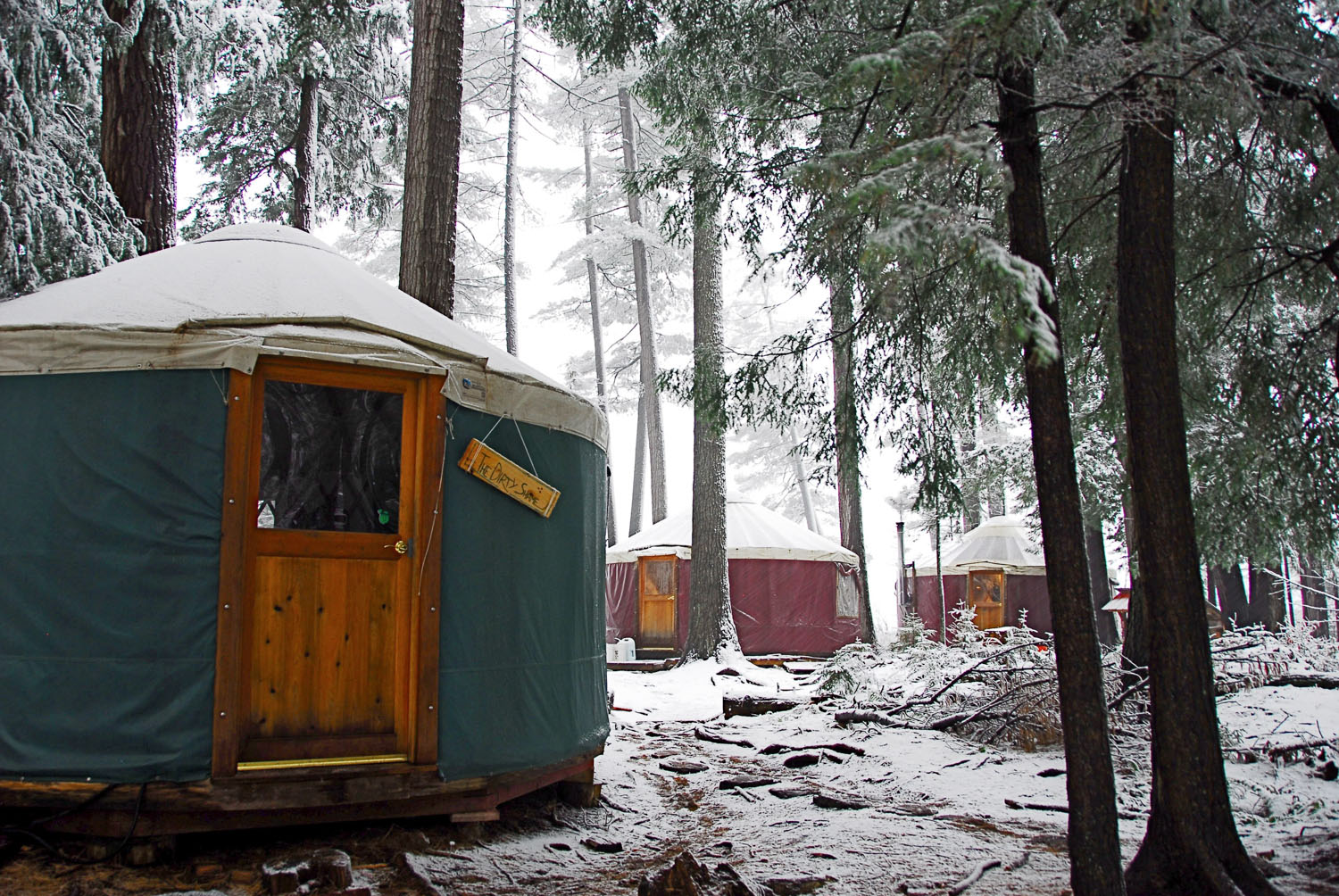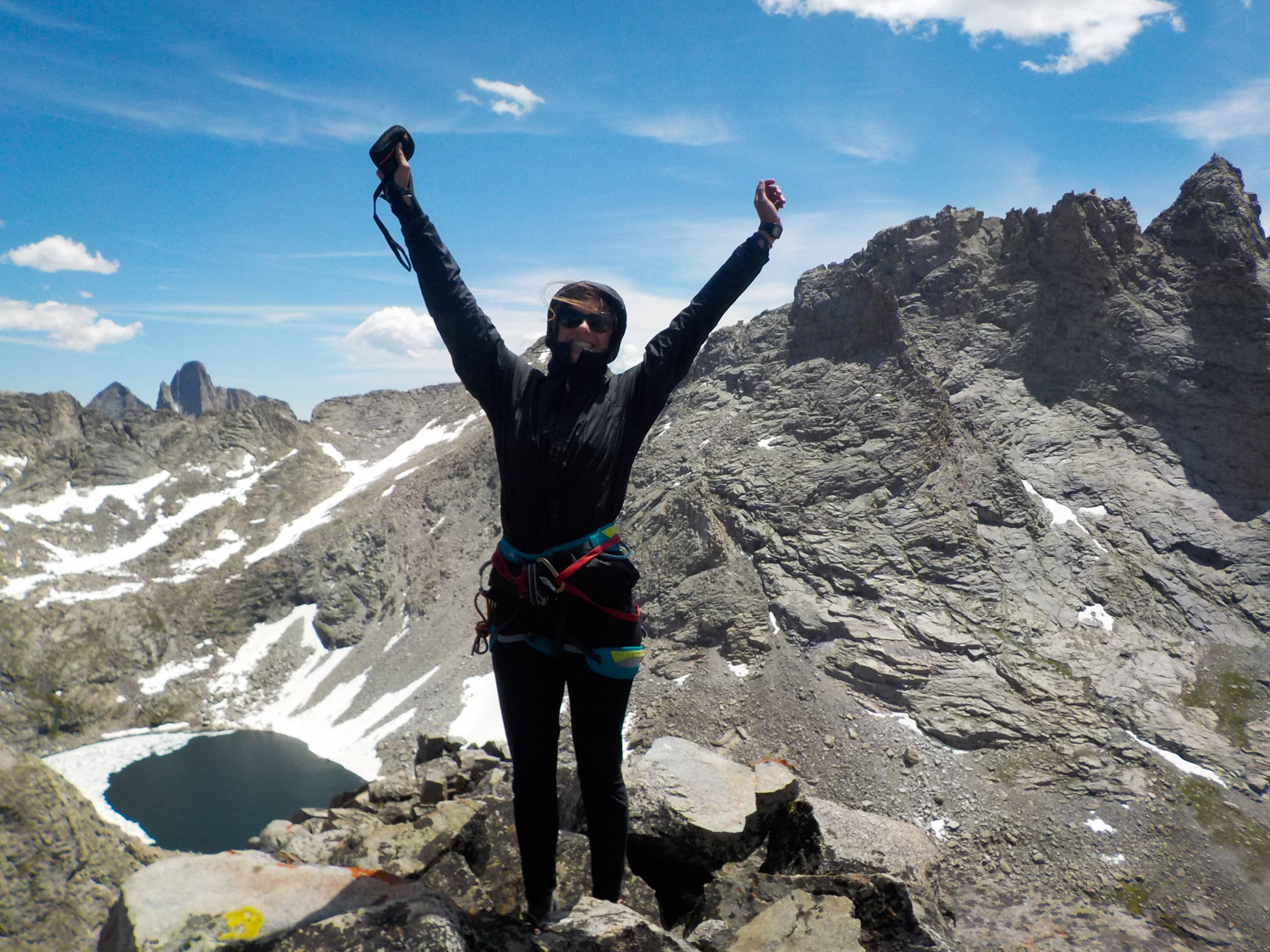My Injured Brain on Nature

My Injured Brain on Nature
By Cait Ward
Today was hard. My hips are sore and swollen, my feet are torn apart, and my shoulders are feeling the weight of the sixty-pound pack. This comes as no surprise – I did not exactly train for this. But my head… my head feels clear and strong. Physically, my body aches, but emotionally, I feel like I’m soaring. The beauty of this course is that all I need to worry about for the next 27 days is taking care of myself, listening to my body, and keeping my head in check.
June 29, 2016 – Day three of my NOLS course in Wyoming’s Wind River Range
When I reflect on my thirty days in the Wind River Range, two moments stand out. The first is this one described above, three days into the course, when the fluctuations in my emotions channeled themselves into confidence. When I realized that for the first time in six years, I was pushing my body in a way that felt good.
The second moment is the last day, when I hiked out of the wilderness fog and migraine free, feeling the strongest, healthiest, and fullest I have felt since my brain injury. Over our thirty day NOLS rock climbing course, we backpacked 70 miles, gained 10,000 feet of elevation, climbed three multi pitches, and spent over a week worth of climbing days at various crags. This last day was easily the proudest of my life. The reward of pushing my body and mind in a way that I had deeply missed. And more than anything, these thirty days served as further support that when removed from our overstimulated and electronic world, my brain could continue to recover.
I hiked out of the wilderness fog and migraine free, feeling the strongest, healthiest, and fullest I have felt since my brain injury.

Seven years earlier, I sat in an office, trying to listen through the harsh pain in my head as the doctor explained to my parents and I how he had never seen anyone suffer from a concussion beyond two years. “In the meantime,” he told them, “just bring a blanket wherever you go, and she can sit underneath it to avoid the light sensitivity.”
For two years, I took his advice. At one point, prompted by a conversation with a good friend who, at the time, could only remember me as “the one who lived in Darkness,” I earned a new nickname. “Darkness” became a marker by which I found pride – a lightness in the comic relief of what my life had become.

As all traumatic brain injuries do, post-concussion syndrome poses unique difficulties for those of us thrown into the category. Symptoms vary drastically by individual, daily functioning is altered, and there is no timeline for recovery. Given its invisible and unpredictable nature, those who suffer often feel isolated and detached. A full time athlete prior to my injury, the concussion completely stripped me from the only identity I knew. For years, I tried wishing the migraines, cloudiness and fatigue away, holding onto the idea that I might just wake up one morning and feel like the person I so deeply missed.
I was signing the documents to drop out of school when my college advisor pointed me towards a spot that had opened on the Adirondack Semester. This semester changed my life… In the absence of technology and artificial lights, my daily migraine count suddenly stopped.
As the two year timeline passed quietly by, I decided that sitting underneath a blanket was no longer going to cut it. I was signing the documents to drop out of school when my college advisor pointed me towards a spot that had opened on the Adirondack Semester. This semester changed my life. For three months, I lived with eleven other students, no running water, and limited electricity in a secluded yurt village.

Photo of the St. Lawrence Yurts for the Adirondack Semester – St. Lawrence Outdoor Program
Driving home on the last day of the semester, I watched the trees pass by as I felt the first migraine creep in. Visions of a nightmare became my reality over the next couple of days, as all of my symptoms flooded back. I struggled to find a new sense of balance, and as I searched for doctors who might provide me with answers, I started coming to terms with the fact that I was going to have to figure out this balance on my own.
It was time for me to take ownership of my head injury and calibrate my new sense of normal. Ownership meant first being honest with myself about my own limitations. I began to conceptualize the management of my fatigue and pain in the form of an energy bank. Adequate sleep and consistent food are baseline requirements. Too little of either will result in a migraine… always. Once I establish this baseline, then I can calculate how much energy I have left to devote to the rest of my life, dependent on the environment I am in. For me, artificial lights, screens, and many forms of exercise serve as the triggers that deplete my energy at the most rapid rate. I can only have so much of any before I must reset with sleep and food. Otherwise, I will slip into the fog and wind up with a migraine… guaranteed. (And sometimes I slip into the fog and wind up with a migraine, regardless of my endless calculations.)
I had been told by my neurologist that my semester in the woods was inconsequential, but I wasn’t buying it.
As I spent my days calculating my energy level and adjusting my routine around the results, I began to reflect on my clear head on the Adirondack Semester. I could not shake the aura of that experience, in some ways haunting me as I struggled through balancing my daily life. I had been told by my neurologist that my semester in the woods was inconsequential, but I wasn’t buying it. As my ecology background kept reminding me, several trials are necessary before drawing conclusions. NOLS would be the ultimate test of my own theory – that if I remove myself from those things that drain me, I might have energy left in my bank to devote towards increasing my heart rate, the one thing I missed beyond all else. This time, however, I would be prepared for the results.

What I was reminded of during my NOLS course was not just what it was like to feel good and balanced. I was reminded of what it felt like to work as a part of a team. Since my injury, I had functioned on the fringes of what I had once defined myself by. The support and strength of my lacrosse team had became that of someone else’s. My strong and earnest work ethic was no longer enough to keep me focused and engaged in the classroom. My friends tucked me into bed on Saturdays before heading out for the night. But on the NOLS course, it no longer mattered where I had come from, but instead, only of where I was. I found trust and support and a deep compassion in a group of people whose primary responsibility was to stay in check with their teammates.
I was reminded of the power in meditation, and the many avenues through which we may access it. I discovered that rock climbing could offer me a tangible reminder of how to balance demanding mental and physical exercise. I was taught that through focused energy and a united front, there was a hoard of emotional weight that no longer served a purpose to continue carrying.
But most importantly, I was reminded of what it meant to be in control of my life… my brain does do better when I spend more time outdoors and less time behind a screen.
But most importantly, I was reminded of what it meant to be in control of my own life. That my brain does do better when I spend more time outdoors and less time behind a screen. When I decide to take the time to step back, reflect, and re-assess, how my body responds positively. That I am a stronger person because of my injury, and not just in spite of it.
Somewhere deep in the Wind River Range, there is now a first ascent climbing route aptly named “Darkness Resigns.”

Fueled by a love for Rick Bass, Rubblebucket, and Mary Oliver, Cait holds a deep fondness for all the places where picnics, canoes, and her sleeping bag collide. Find her on Instagram @picnicsincoolplaces and read more of her story on concussionfoundation.com. For more stories and support for traumatic brain injury recovery, visit loveyourbrain.com.
Be the first to comment